If you’ve looked into stressing your body for the purpose of adapting and becoming stronger, you’re probably aware of the benefits provided by infrared saunas and cold plunges. As a result, you may be wondering how cold therapy compares to sauna use, and if you can reap additional benefits by combining the two practices.
This article will give you a brief overview and a side-by-side comparison of the benefits of cold therapy and infrared saunas (see the table below). I’ll also discuss the combined benefits you can reap from engaging in what’s called a “nordic cycle” — a practice that involves going back and forth from ice cold water to a hot sauna.
Ice Bath vs. Infrared Sauna
The table below offers a side-by-side comparison of the benefits of cold therapy (i.e., ice baths) and infrared saunas. Note that most infrared sauna benefits can also be achieved through the use of traditional (Finnish) saunas.
| Health Benefits | Cold Therapy | Infrared Sauna |
|---|---|---|
| Hormesis | ✓ | ✓ |
| Improves discipline | ✓ | ✘ |
| Increases blood flow | ✘* | ✓ |
| Reduces inflammation | ✓ | ✓* |
| Improves immune function | ✓ | ✓ |
| Helps with fat loss | ✓ | ✓ |
| Helps you relax | ✘* | ✓ |
| Helps you reduce stress | ✘* | ✓ |
| Increases energy levels | ✓ | ✘* |
| Boosts your mood | ✓ | ✓ |
| Improves sleep | ✘* | ✓ |
| Effect on blood vessels | Constriction | Dilation |
As you can see in the table above, both ice bathing (which I’ll also refer to as cold plunging) and sauna bathing offer similar benefits, though they achieve those benefits in different (and sometimes opposite) ways.
For example, infrared saunas increase blood flow by dilating your blood vessels. Conversely, a bath in an ice tub causes your blood vessels to initially constrict; that constriction increases blood flow to your vital organs but restricts blood flow to your extremities. Plus, once you get out of the tub and warm up, the blood vessels supplying blood to your extremities dilate, causing increased blood flow to those areas.
Another great example is how both cold plunges and saunas can make you stronger, improve physical performance and endurance, and even bolster your immune system.
When you expose yourself to cold temperatures, your body amps up the release of special proteins (aptly named cold shock proteins). Based on early research on rodents and a ton of anecdotal evidence from Wim Hof (a master of cold exposure), cold shock proteins can slow down the progression of Alzheimer’s and activate the immune system.
On the flip side, heat exposure causes a spike in heat shock proteins that can reduce inflammation of the brain (neuroinflammation). Additionally, heat also triggers the release of white blood cells to support your immune system in fighting pathogens.
It’s worth pointing out that cold exposure reduces inflammation by constricting your blood vessels and thus causing a decrease in blood flow. On the other hand, heat exposure dilates blood vessels, increasing blood flow and inflammation (at least in the short term). However, by enabling the body to send more oxygenated blood to the inflamed area, heat exposure speeds up the healing processes, which leads to reduced inflammation over time.
Other examples of how cold and heat therapy provide similar benefits, but in different manners, include the reduction of stress, increased energy levels and improved sleep.
While sauna bathing is arguably fairly relaxing, cold plunging sends your body into fight or flight mode, thus dramatically ramping up your perceived stress levels. But as you get accustomed to the cold water and learn how to better handle that stress, you’ll likely find it easier to manage stress in everyday situations. As a result, cold exposure can help you reduce stress over time.
Every time I get out of my cold plunge (I primarily use the Sun Home Saunas Cold Plunge Pro), I feel invigorated and full of energy. On the flip side, if I spend 30+ minutes in my infrared sauna at the highest temperature setting, I feel like taking a nap. However, I’ve noticed that if I reduce the sauna’s temperature by a few degrees, a 20-minute sauna session can actually boost my energy levels.
The last benefit I’d like to talk about is improved sleep. A hot sauna session temporarily increases your core temperature but leads to a reduction of core temperature shortly thereafter. That delayed cooling effect is why hot showers and sauna bathing can help you fall alseep quicker and get more deep sleep (considering that a 2-3 degree reduction in core temperature is a requirement for falling asleep).
Cold plunging has the opposite effect. It causes a temporary reduction in core temperature, followed by a warming-up period. That’s why it’s usually not advisable to cold plunge right before going to bed. However, I’ve noticed that cold plunging earlier in the day helps me fall asleep quicker at night. I suspect that’s because cold plunging has helped me control my stress and breathing and down-regulate my sympathetic nervous system.
So as you can see, both cold and heat therapy provide similar benefits — though they often use different (and sometimes vastly different) mechanisms.
The reason why the benefits of both therapy forms are synergistic (instead of canceling each other out) is because humans have evolved to adapt and become more resilient when exposed to extreme circumstances on opposing sides of the spectrum.
For example, our hunter-gatherer ancestors might have gone a period without food before killing a wooly mammoth and feasting on it for a few days. So they went from no food at all to an abundance of it. The same principle applies to extreme temperatures — such as going from extremely hot to ice cold, as in the case of sauna bathing and cold plunging.
That’s why I like to combine cold and heat therapy to reap the maximum possible benefits.
Combined Health Benefits
Now that you know that combining cold therapy with sauna bathing can amplify the individual health benefits listed in the table above, let’s talk about how that works from a physiological perspective.
1. Helps You Adapt and Become Stronger (Hormesis)

Hormesis is the body’s ability to adapt to a stressor and become stronger as a result. Exposing your body to unusual or extreme temperatures (both hot and cold) stresses the body, causing adaptation and a chemical response that makes the body more resilient.
Combining cold plunges with infrared sauna use allows the body to adapt to both sides of the temperature spectrum, making it more resilient and robust overall.
2. Increases Blood Flow

The energy carried by infrared radiation causes your tissue to heat up. As a result, your nervous system responds by dilating the affected blood vessels in an attempt to cool the body down. That increases blood flow to the skin and muscle tissue, which helps reduce pain and transports oxygen and nutrients to the affected cells. Doing so speeds up recovery after intense workouts and reduces muscle soreness.
Cold water causes an initial increase in blood flow to the skin as the body attempts to prevent the affected tissue from cooling down. Once the brain realizes that the water is too cold to counter, it begins constricting the blood vessels in the extremities and it redirects blood flow to the vital organs.
However, as soon as you get out of the cold water, blood vessels start dilating to provide the cold tissue with warm and nutrient-dense blood. As a result, you see an increased blood flow after cold water exposure that also helps with pain reduction and it improves recovery.
Combining both (ideally back to back), amplifies the individual effects while providing an excellent workout for your blood vessels (thanks to the rapid constriction and dilation).
3. Improves Immune Function
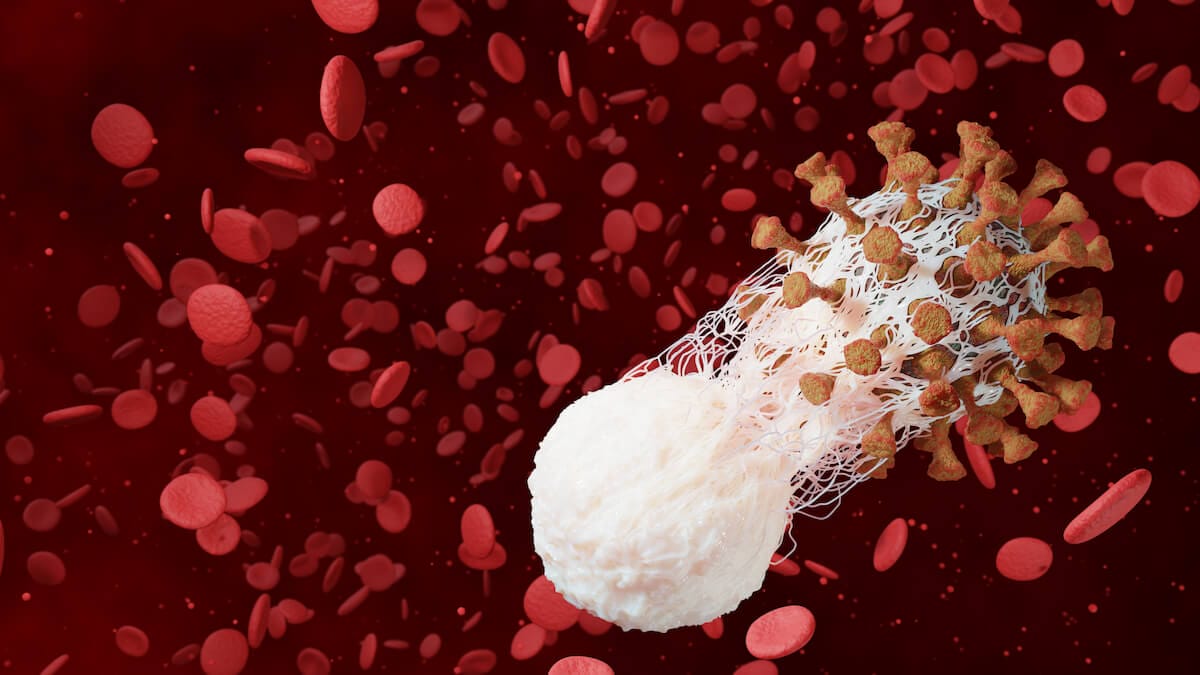
Sauna bathing increases your core body temperature, thus mimicking a mild fever. As a result, your immune system triggers the release of white blood cells, lymphocytes, neutrophils and interferons – all part of the body’s antiviral army.
On the other hand, cold water exposure increases plasma concentrations of glutathione, an antioxidant that plays a key role in the proper function of t-cell lymphocytes and which activates natural killer (NK) cells.
Thus, combining cold therapy and sauna bathing supports your immune system from different angles, making you more resistant to viral infections.
4. Burns Fat and Helps You Lose Weight

Combining cold plunging with sauna bathing jumpstarts your ability to burn fat and lose weight.
On one hand, cold water exposure activates your brown adipose tissue, which helps burn fat for energy so you stay warm. On the other hand, infrared radiation increases your heart rate and metabolic rate the same way a mild to moderate cardio workout would, allowing you to burn extra calories.
As a result, the combination of both treatments can be an excellent tool to support your weight loss efforts.
Just make sure you pair cold plunging and sauna bathing with a species-appropriate diet for humans, enough quality sleep and proper stress management.
5. Helps You Reduce Stress
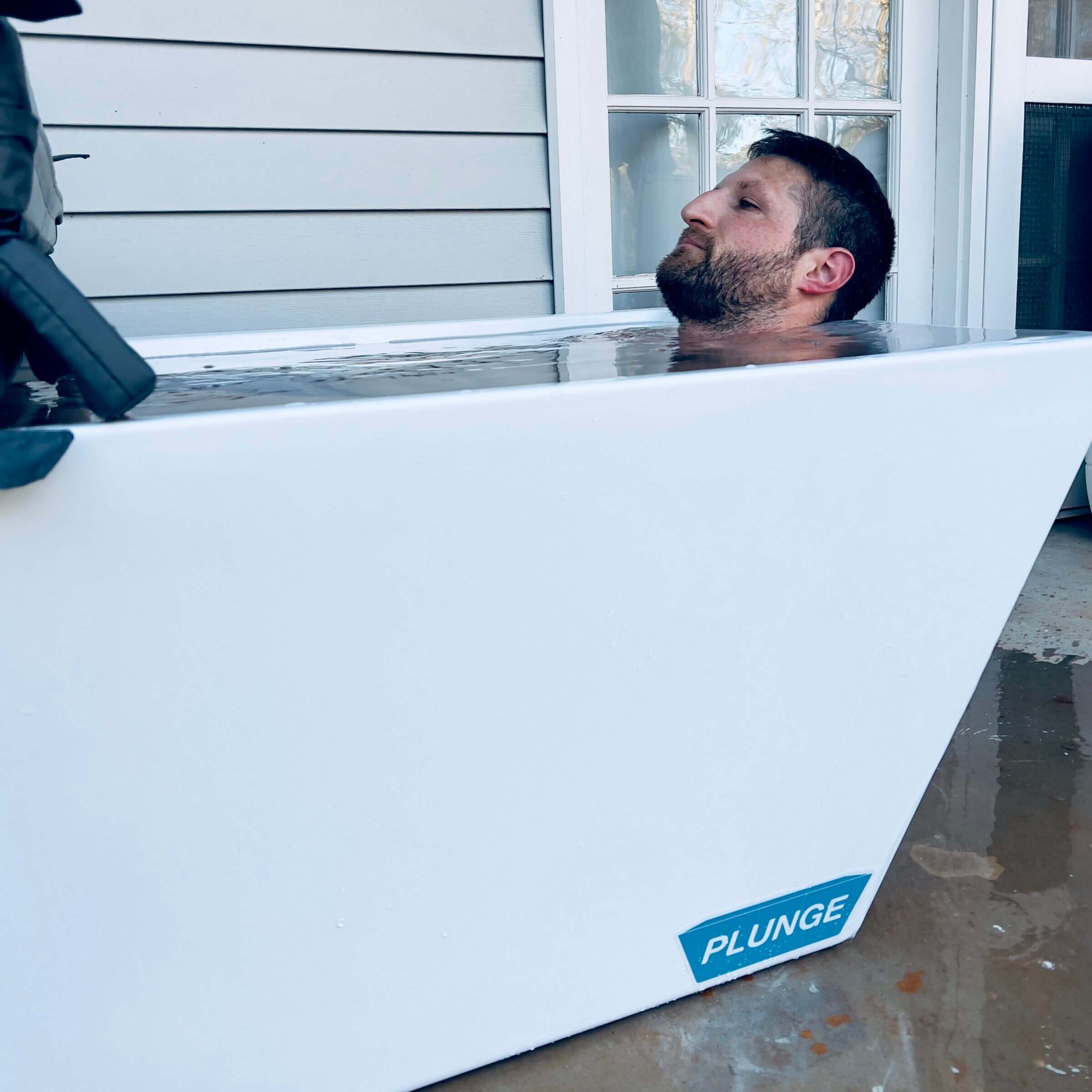
If you’ve ever spent time in a sauna, you probably remember how relaxed you felt when you got out. There’s just something special about sitting in a room filled with hot air while sweating profusely and letting your mind wander.
One of the reasons why sauna bathing is so relaxing is because it causes a significant release of endorphins, including beta-endorphin, a substance that improves your mood, energy, sense of calm and pain tolerance.
Cold plunging is usually anything but relaxing because it upregulates your sympathetic nervous system, triggering a fight or flight response. However, cold plunging teaches you to slow down your breathing, thus down-regulating your sympathetic nervous system.
Mastering that skill while being exposed to ice water can help you in other stressful situations (unrelated to ice bathing) to stay calm and in control of your stress response.
I’ve noticed an improvement in how I respond to stress thanks to regular cold plunging.
Combining active relaxation in the sauna with improved skills to manage stressful situations is a powerful way to positively influence how you perceive stress in general.
6. Increases Energy Levels
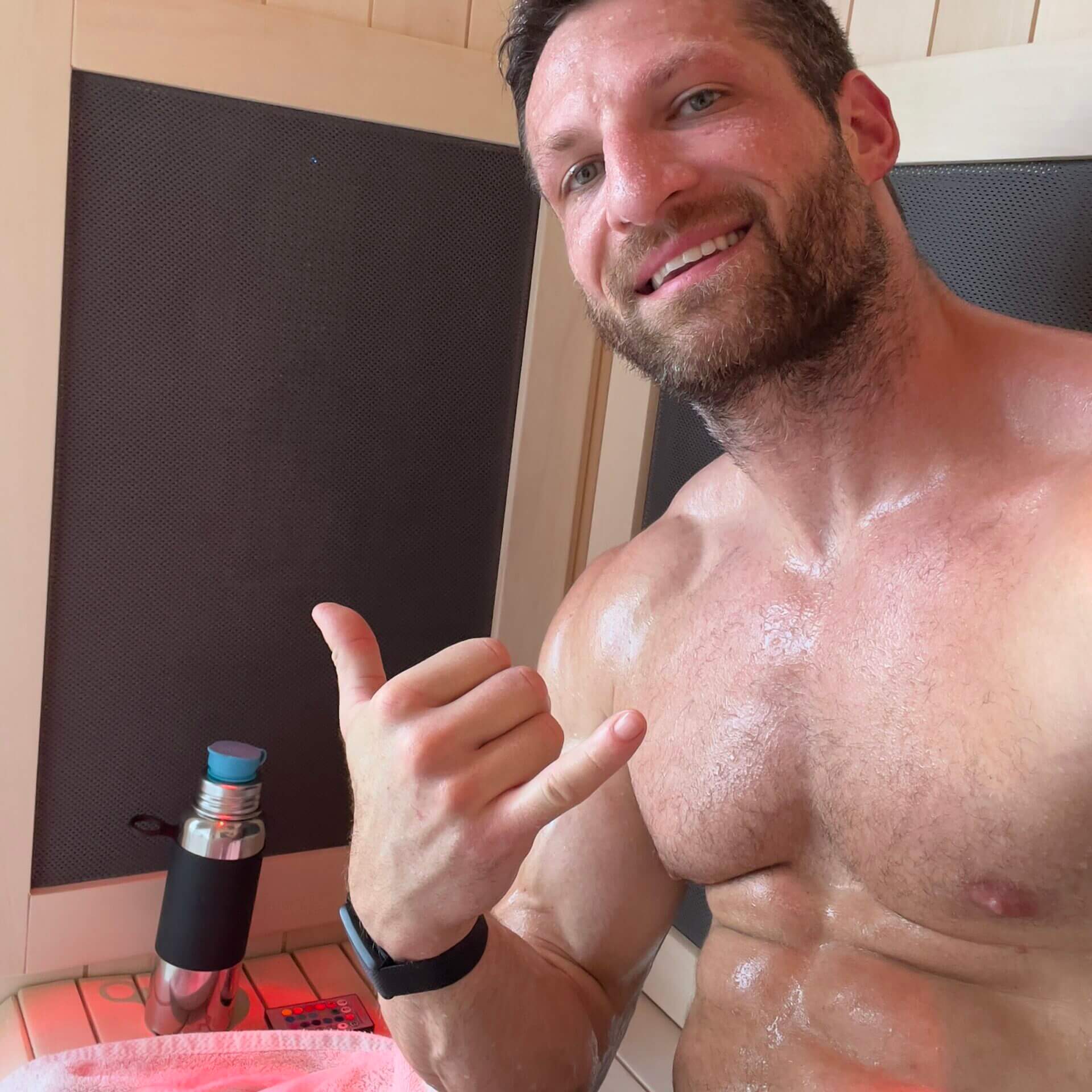
Remember how sauna bathing triggers the release of certain energy-boosting hormones, including beta-endorphin? Cold plunging does something similar. In fact, submerging your entire body in ice cold water triggers the release of norepinephrine, a hormone that’s responsible for attention, focus and energy.
Every time I get out of my cold plunge, I feel invigorated and ready to take on the world. Combining both types of treatment targets different areas of your endocrine system, thus amplifying their (individual) energy-boosting effects.
Keep in mind that everyone reacts slightly differently to hot and cold exposure. In other words, some people may feel exhausted and even sleepy after prolonged sauna sessions.
For example, if I stay in my Sunlighten infrared sauna for more than 30 minutes, my energy levels start dropping and I feel like taking a nap (or going to bed). I don’t mind that because I can leverage late sauna sessions to improve my sleep (see below).
7. Boosts Your Mood

There is a close relationship between your mood and energy levels, because both are influenced by some of the same hormones, including beta-endorphin and norepinephrine. That’s why you’ll likely experience a boost in mood when you jump into a cold plunge or infrared sauna.
Similar to improving your energy levels, combining different types of treatment can have compounding effects.
Anecdotally, I can tell you that any time I combine cold plunging with sauna bathing, I’m in a much better mood than if I did either of those treatments separately — especially on days that I feel stressed out or overwhelmed with work.
8. Improves Sleep

While shorter sessions in my infrared sauna at medium temperatures (up to 135 Fahrenheit) boost my energy levels, staying in the sauna for more than 30 minutes and increasing the temperature to 145 F or higher makes me so relaxed that I feel like taking a nap.
That’s great for when I want to prepare my body for bed and fall asleep quicker.
One of the reasons why sauna bathing can reduce your sleep latency is because infrared radiation causes the blood vessels in your skin and outer tissue to dilate. In turn, that helps your body reduce its core temperature once you get out of the sauna.
A reduction of core temperature is one of the requirements for falling asleep, as I discuss in more detail in my article about how to sleep better and fall asleep quicker.
Immersing your body in cold water before bedtime seems counterproductive considering that it triggers a fight or flight response. However, I’ve noticed that after I got used to managing my body’s stress response, my heart rate drops relatively quickly while I’m inside of my cold plunge.
Additionally, studies have shown that prolonged cold exposure lowers the body’s core temperature, which can help you fall asleep quicker.
I’ve noticed an improvement in sleep quality on days I take a cold plunge in the evening, because it helps me relax. As a result, I tend to have a higher HRV and spend more time in restorative phases of sleep (REM and deep sleep) as measured by my WHOOP Strap.
However, I recommend experimenting with that and avoiding cold plunging if you’re new to cold water therapy.
How I Leverage Cold Plunging and Sauna Sessions
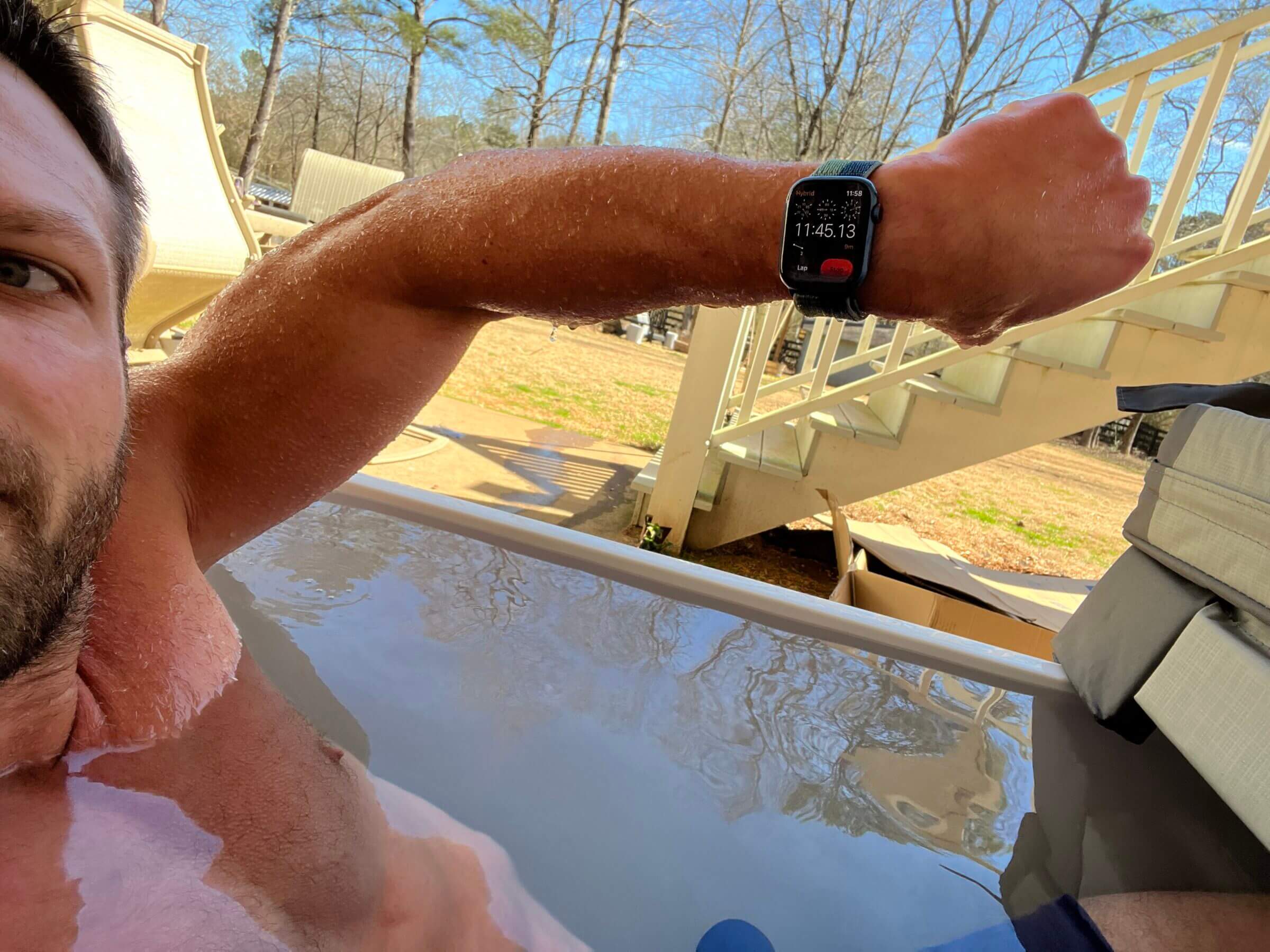
Now that you’ve learned about all the benefits of combining sauna bathing with cold plunging, let me show you how I use these techniques on a regular basis.
In a nutshell, I don’t have a fixed schedule that I follow. Instead, I’m opportunistic, and I try to keep my sauna and cold plunging sessions as random as possible so my body doesn’t get used to it.
Practically that means incorporating the following routines into my daily and weekly schedule:
- Morning cold plunge before a workout.
- Cold plunge followed by a sauna session in the afternoon/evening.
- Sauna session followed by a cold plunge in the afternoon/evening.
- Solo sauna session on recovery days.
- Random afternoon/evening cold plunge.
- Cold plunge after an intense workout.
That doesn’t mean I do everything on the (above) list every day. Instead, I incorporate one or two of these routines based on how much time I have, my recovery needs and other factors.
Often, how I feel determines what recovery methods I choose and for how long I stay in the cold plunge or infrared sauna.
On days that I deal with elevated stress levels, I usually combine cold plunging with sauna bathing because it’s more effective than doing only one of the two.
On days I feel mentally weak or when it’s cold outside, I stay in the cold plunge for longer (up to 12 minutes) to teach my brain that weakness isn’t an option.
Overall, I encourage you to try different tactics to see what works best for you. Just keep in mind that “what works best” isn’t necessarily what feels most comfortable — especially if your goal is to improve your resilience and become mentally stronger.
Frequently Asked Questions
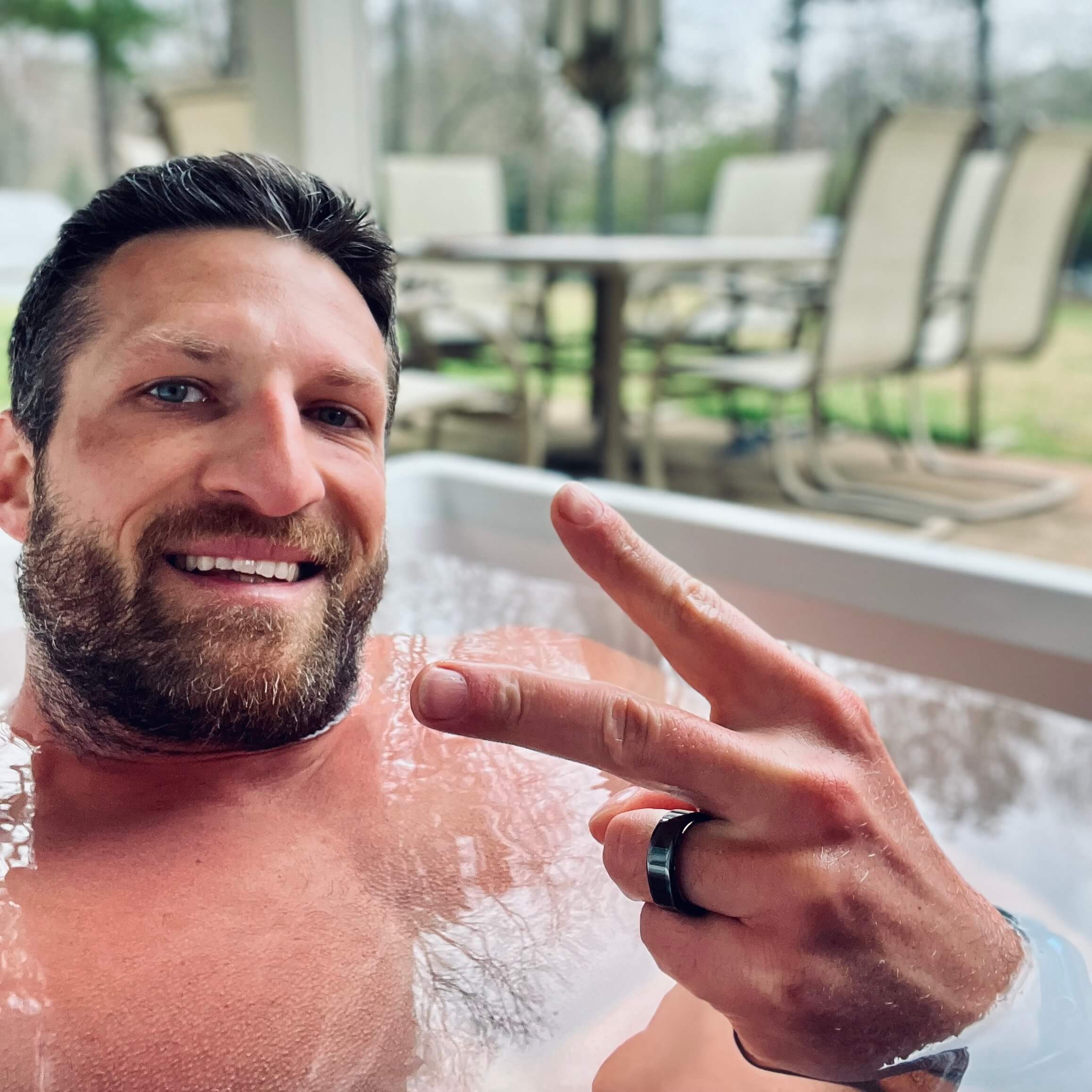
The traditional nordic cycle of combining sauna bathing with cold plunging suggests jumping into an ice bath after the sauna. However, there’s nothing wrong with reversing that sequence.
I regularly cold plunge before going into the sauna, depending on what I’m trying to accomplish. Going from hot to cold is definitely a greater shock to the system because the sauna dilates your blood vessels, causing you to cool down quicker when you then jump into ice cold water. So if improving your body’s stress response is the goal, do the sauna first and then the cold plunge.
Additionally, if your goal is to get a boost in energy levels, end with cold exposure since the sauna (depending on the temperature) will likely have a relaxing effect.
However, if improving blood flow and circulation is your goal, try doing the cold plunge first and then hop into the sauna.
If you’re healthy and don’t suffer from cardiovascular problems, jumping into cold water after a sauna session (or vice versa) isn’t a problem. However, I always recommend checking with a knowledgeable medical professional first before you expose your body to new stressors.
I’m in excellent cardiovascular and metabolic shape, so going from a hot sauna into extremely cold water isn’t something my body struggles with.
On a side note, when my mom first saw a video of me doing the cold plunge, she advised me not to take a hot shower right after because she read it’s dangerous. Obviously, going from cold to hot is a shock to the system, much like going from hot to cold is. But that’s the entire point of contrast therapy or the nordic cycle.
While the traditional method of combining sauna bathing with cold plunging has you perform these activities back-to-back, you can also break them up across different days to achieve similar benefits.
I haven’t seen any studies comparing those two variations side-by-side, but based on my experience, going from the sauna to a cold plunge might be slightly more effective as far as the impact on your nervous system and changes in blood flow are concerned.
However, if that’s not practical for you, enjoying a sauna bath one day and a cold plunge on the next has arguably more benefits than choosing only one of the two (for all the reasons I explained above).
Both sauna bathing and cold plunging offer a variety of health benefits, including all the ones I outlined in this article.
However, there are also distinct differences between these two wellness routines. For example, immersing yourself into ice cold water is a greater shock to your system than spending 30 minutes in a hot sauna. As a result, cold plunging can make you more resilient and mentally stronger, something a sauna can’t do.
On the other hand, spending time in a sauna is relaxing and it mimics a mild to moderate cardio workout by increasing your heart rate and making you sweat.
Ultimately, your health goals determine which of the two is the better choice for you (if you can’t have both).
I’m grateful that I have the opportunity to leverage both a cold plunge and a full-spectrum infrared sauna to reap the maximum benefits.
If you suffer from high blood pressure, cold plunging may not be a good idea because the cold water causes your blood vessels to constrict, thus temporarily causing a further increase in blood pressure.
As a result, sauna bathing might be the better option for you because it causes your blood vessels to dilate, thus resulting in a temporary reduction in blood pressure. Either way, I recommend talking to your doctor before starting a new wellness regimen.
Yes, taking a cold shower is certainly a viable alternative if you don’t have access to a cold plunge or ice bath. Just keep in mind that tap water is usually much warmer than the water in a cold plunge, leading to reduced benefits.
Yes, you can definitely combine sauna bathing with cryotherapy. However, as explained in my article comparing cold plunging with cryotherapy, I don’t think the latter is quite as effective as cold water immersion.
Both sauna bathing and cold plunging can release certain chemicals in your brain that boost your mood and trigger a sensation of calmness. Additionally, cold water immersion triggers the release and activation of cold shock proteins that offer neuroprotective benefits and prevent cell death in individuals who suffer from neurodegenerative diseases, including Alzheimer’s. As a result, I’d argue that cold plunging might have a leg up as far as improving mental health is concerned.
Sauna bathing increases your body temperature, thus causing you to sweat profusely. That helps drain your lymphatic system, thus supporting your body and its natural detoxification pathways. As a result, sauna bathing is more beneficial for detox than cold plunging.
While jumping into a cold plunge after a bath in hot water (i.e., hot spring) does have certain benefits as far as muscle relaxation is concerned, I don’t think it’s quite as effective as going from a sauna into an ice bath. That’s because of the greater temperature difference between saunas and ice baths that provide a more profound impact on your nervous system.
Based on research from metabolic scientist Susanna Søberg, 11 minutes or more of cold exposure and 57 minutes or more of sauna bathing per week gives you the most benefits.
Combining Cold Plunges and Saunas: Final Thoughts

Combining sauna bathing with jumping into cold water isn’t new. Many of the Nordic countries have practiced this for at least hundreds of years, because those cultures have realized that combining the practices has synergistic health benefits (and because these geographies often happen to have easy access to ice cold water natural sources of heat).
I grew up in Austria enjoying the occasional sauna session after intense workouts. But I didn’t really understand much about the benefits of heat exposure until much later in life.
Cold plunging was never on my radar until I attended a biohacking conference in 2021. Fast forward to 2022 and I can’t imagine not having unlimited access to my Cold Plunge and Sunlighten Infrared sauna — now that I know how beneficial sauna bathing and cold plunging are.
If you have never tried it before, I encourage you to give it a shot if you have the opportunity! If you have the space and budget, consider adding a cold plunge and infrared sauna to your home. I’m glad we did, and I can’t wait to do a back-to-back session later today!

Michael Kummer is a healthy living enthusiast and CrossFit athlete whose goal is to help people achieve optimal health by bridging the gap between ancestral living and the demands of modern society.
Medical Disclaimer
The information shared on this blog is for educational purposes only, is not a substitute for the advice of medical doctors or registered dieticians (which we are not) and should not be used to prevent, diagnose, or treat any condition. Consult with a physician before starting a fitness regimen, adding supplements to your diet, or making other changes that may affect your medications, treatment plan or overall health. MichaelKummer.com and its owner MK Media Group, LLC are not liable for how you use and implement the information shared here, which is based on the opinions of the authors formed after engaging in personal use and research. We recommend products, services, or programs and are sometimes compensated for doing so as affiliates. Please read our Terms and Conditions for further information, including our privacy policy.
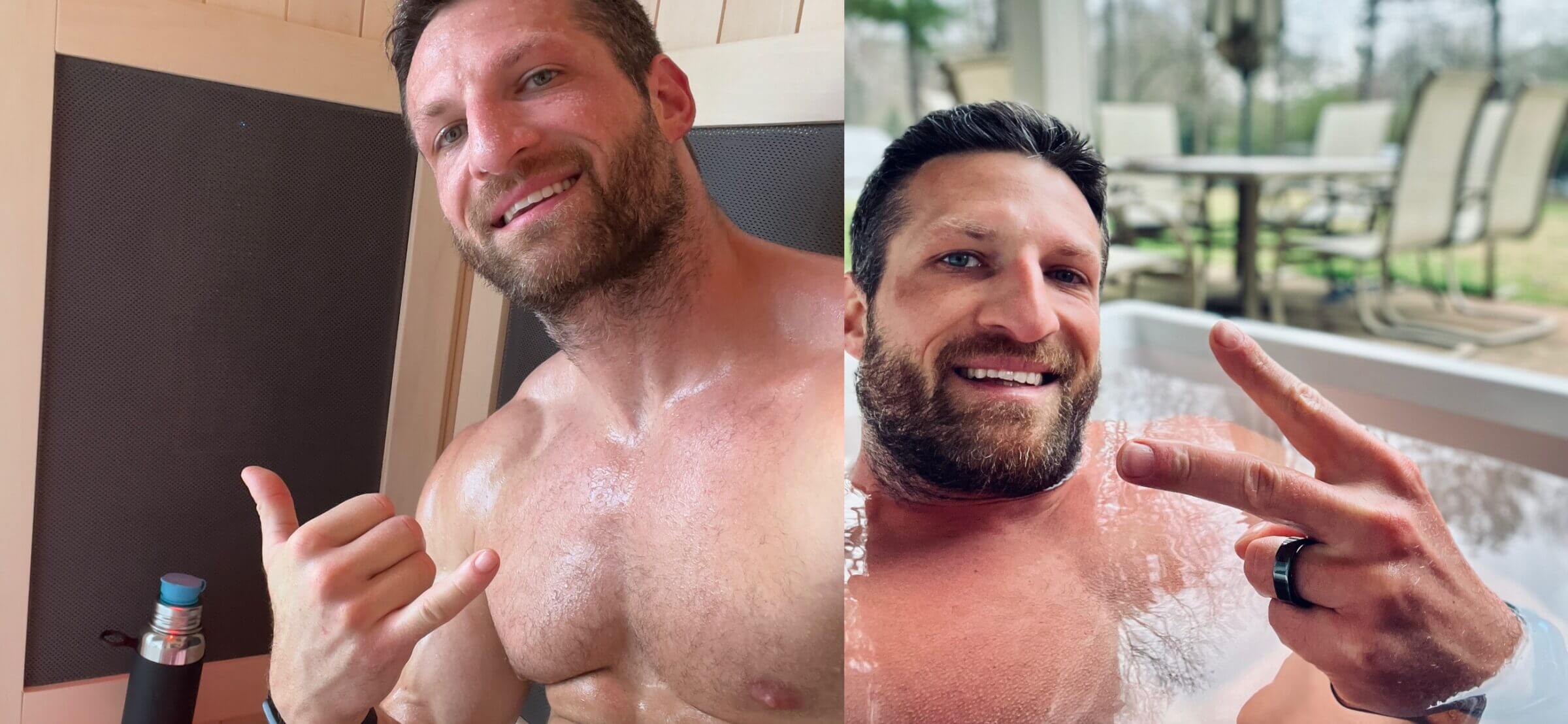
I’ve tried finding info on cold therapy without being a water plunge to no avail. Been doing sauna then going outside (its winter in Minnesota) lately.
Any idea of the effectiveness of that? I’d assume it would have at least some similar benefits but no idea how much vs cold plunge. And yes I get today doing it at 30f is also different than doing it last week at -6f
Hi Andy,
I don’t think it’s quite the same. I rolled around in snow in my bathing suit a few weeks ago while visiting family in Austria at 12F and felt absolutely fine. No cold shock whatsoever. So I supposed you’d have to stay in cold air for extended periods (until you start shivering) before you’ll reap any benefits.
Andy, Having done the FIR and then cold shower and FIR and outside in MN, even below zero -5 – -10, the shower was significantly more of a cold shock for me. Many years ago in Santa Fe NM going from traditional sauna to snow vs traditional sauna to cold plunge, the plunge was a step up in commitment. For what it’s worth, I recommend the Cold shower or plunge. Definitely a much bigger boost in energy, clarity, outlook for me.
Michael, I have an inferred sauna and it also has the option of a traditional sauna, which option gives better health benefits?
Dave U.S.A.
It depends on what you’re trying to accomplish and what exact IR sauna you have (full spectrum vs. far-infrared only). Both types of saunas provide pretty much the same benefits but IR has the advantage of offering some skin health (collagen production, wound healing…) benefits.
Very very interesting! I’ve read that cold immersion is not ideal for hypertrophy if your goal is really to focus on muscle growth. As sauna is better and stimulates muscle growth. But I can’t find any information regarding the effect of the combination of sauna and cold immersion on a post weighlifting workout. If it is better to just use sauna or if the combo of hot and cold can be even better ?
Hi Germain!
I know that intense stressors cause a release of growth hormone and I’ve seen studies suggesting that certain sauna bathing protocols trigger a massive GH release. However, based on what I know about hormesis, any stressor can trigger such an affect. So I’d assume cold exposure would cause the same spike, even though I haven’t found a study testing this hypothesis.
Practically, I don’t think you’ll negatively impact muscle growth by combining hot and cold. I haven’t seen any influence on my muscle growth.
Cheers,
Michael
That was very informative. Thank you.
Thank you Michael. Your excellent info was just what I was looking for.
Kind regards from Lyn (NZ)
You’re most welcome Lyn!